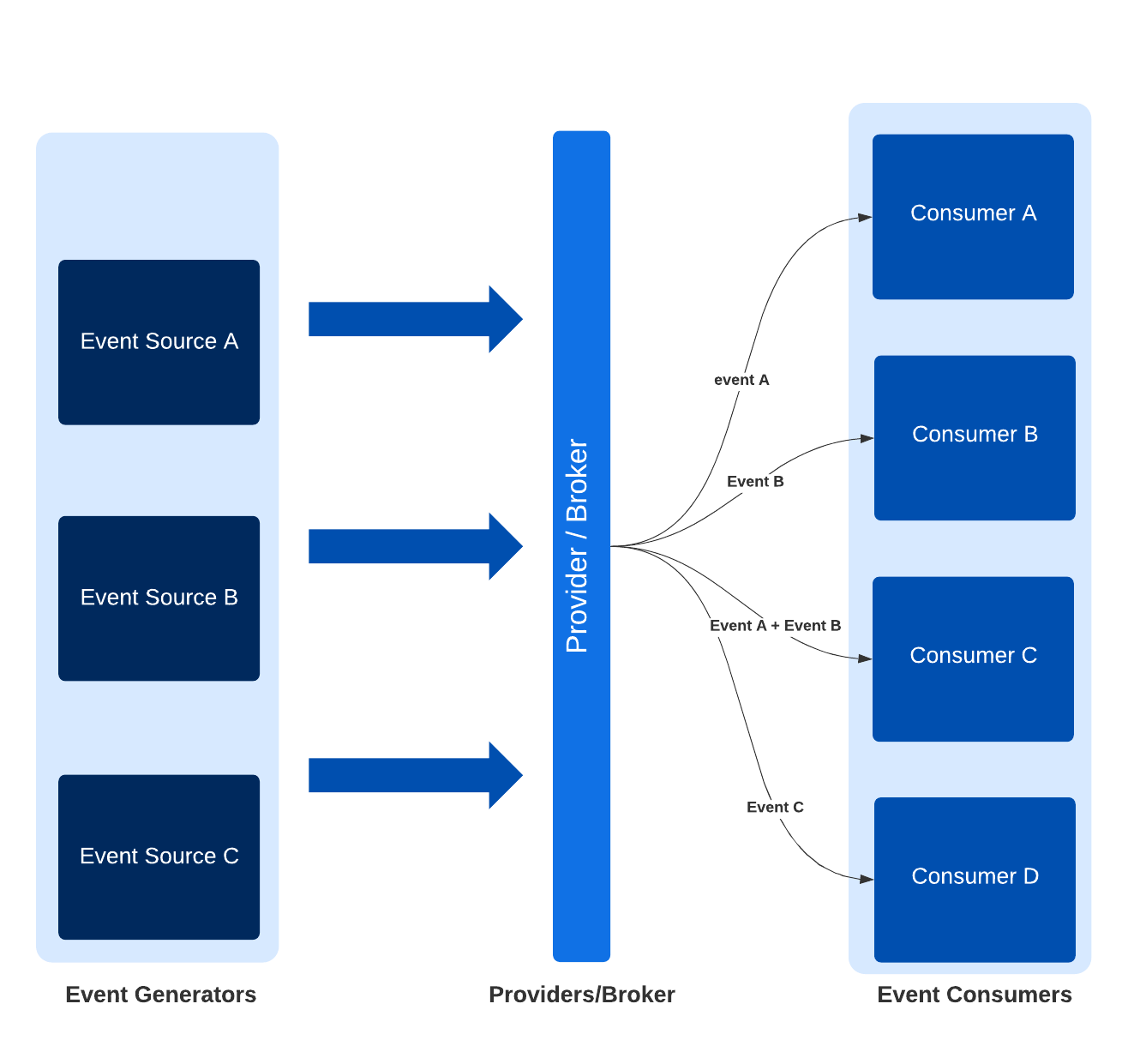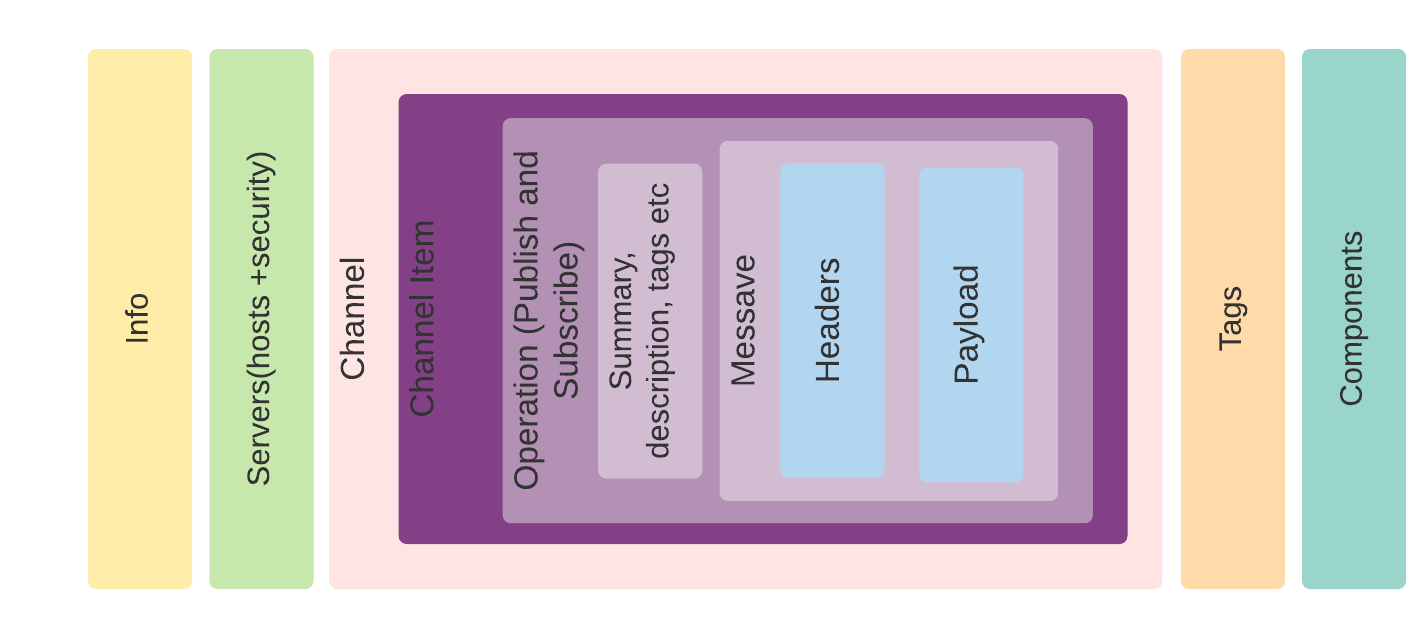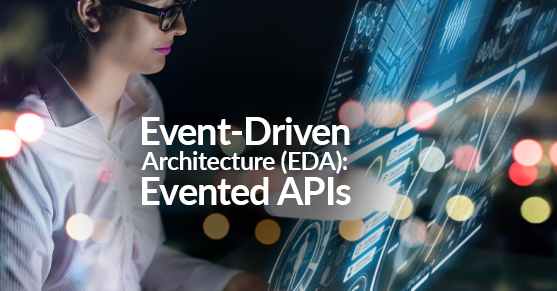Event-Driven Architecture (EDA) is the choice of many architects in distributed systems for providing many benefits which include loose coupling, scaling, fault tolerance, extensibility, real-time, resilience, recovery, etc. However, EDA has its challenges, and in order to overcome them, Evented APIs came into existence.
Evented APIs fill the gap between synchronous APIs and evented APIs. Evented APIs extend the capabilities of traditional event-driven applications and provide the standard interface to support the development of evented systems and enable reuse, security, monitoring, and self-service capability.
What Is Event-Driven Architecture?
To simplify the EDA architecture, the architectural pattern contains three layers for publishing and consuming events:
- Event Publisher: It generates and sends events to the Event provider on a specific channel.
- Event Provider: receives the events from the publisher and distributes them to one or more consumers based on the type of channel the event is sent to. It is also responsible for storing events for reliability.
- Event Consumer: receives the events from the channels and processes the events.

Event-Driven Architecture patterns have been implemented in every enterprise for many use cases. But, the implementation is mainly confined to Enterprise infrastructure due to various factors and challenges.
EDA Challenges when implementing architectural pattern:
- Standardization: There are no standards for defining the events, channels, payload, etc., which makes development difficult f
- Discovery: There are no catalogs to store the API or events, which makes the API discovery difficult and impacts the reusability of the API.
- Multiple Protocols: The messages are bound to transport protocols, and developers are required to work with various protocols
- Testability: Unit tests and test-driven development are unavailable for the Eventful approaches.
- Visibility: The lack of end-to-end visibility and governance leads to blind spots when errors occur during the event flow.
- Security Standardization: The security of the events depends on the messaging protocol, and there is no standard security for publishing and subscribing to the events.
AsyncAPI
AsyncAPI specification brings standardization to the Evented API, allowing publishers, consumers, channels payloads, etc. AsyncAPI looks much like the OpenAPI specification, so the developer can learn it without much effort. The AsyncAPI contains the specification to describe the servers, channels, message publishers, consumers, message headers, payloads, components, etc.

Through the AsyncAPIs, the Evented APIs can overcome the challenges of the Enterprise Driven Architecture:
- Discoverability: AsyncAPI and Event schemas can be stored in the API catalogs, searched, and discovered, facilitating reuse and collaboration.
- Testability: Mock tests can be created on the AsyncAPI to reflect the utilization of the API, removing the testability gap in event-driven architectures
- Security Standardization: AsyncAPI supports multiple security schemes.
- Scaffolding & Documentation: Using AsyncAPI spec, tools can be built to scaffold the code generation for various languages and automate the API documentation.
Conclusion
To conclude, the Evented APIs solve many of the problems of Enterprise Driven Architecture and bring governance capabilities to the asynchronous APIs. Also, with Evented APIs, organizations can improve event-driven systems, reusability, shareability, and collaboration between multiple teams.
Apart from using the EDA patterns in enterprise infrastructure, we can expand their use to Cloud messaging, IoT, etc.
For more information, please contact us.

